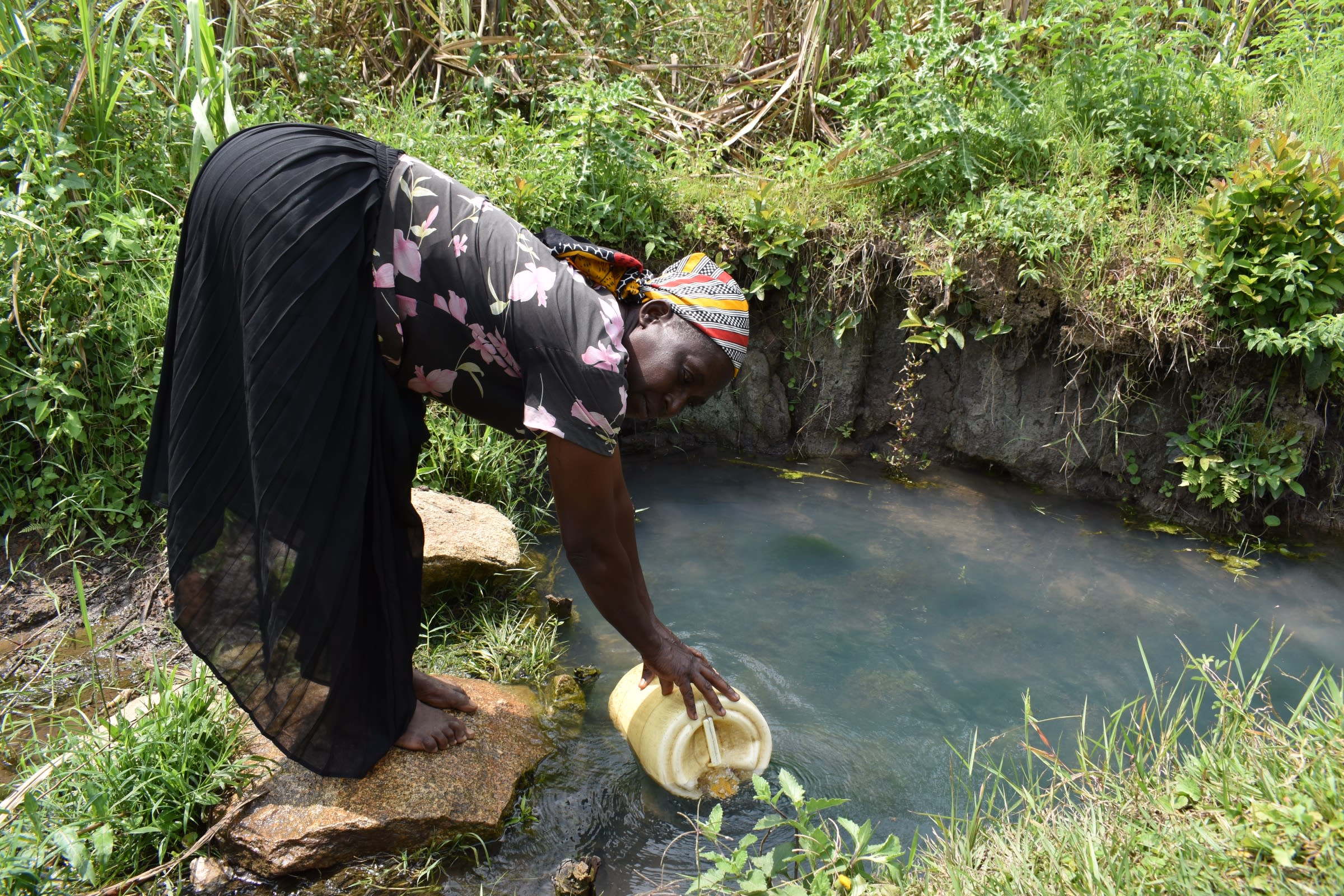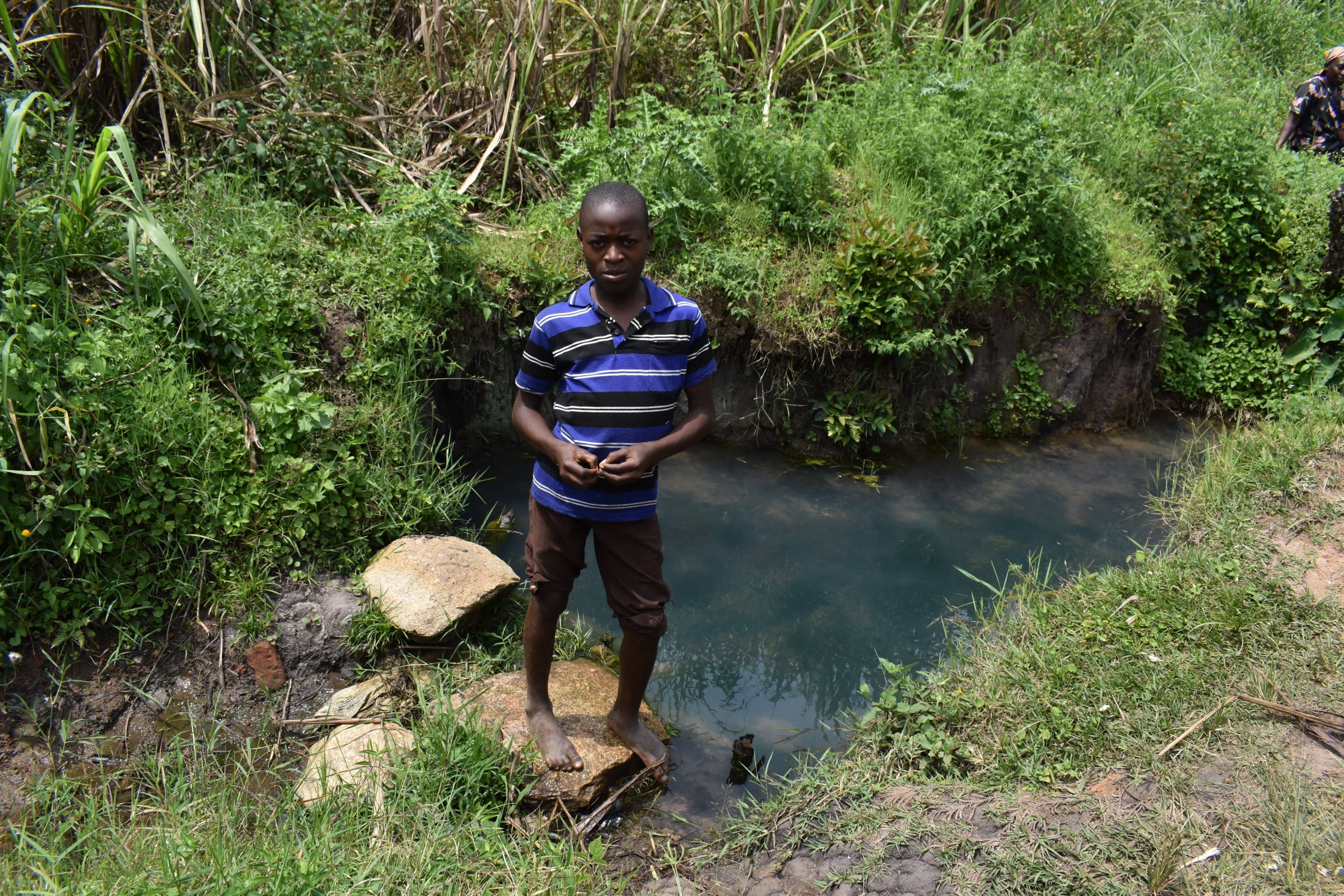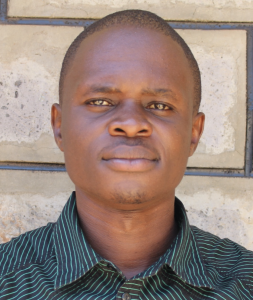The lines to fetch water at Benson Lumbasi Spring get so long that sometimes people give up and go home instead of pushing their way to the front of the queue. But water is essential for cooking, cleaning, and farming, not to mention drinking and staying alive. For the 200 people who live in Mukava, this means that their everyday activities have to be put on hold.

"Accessing the spring is a challenge for me, especially when it rains, as there are no stairs installed to help one get to the source," said local farmer Jane Oside (in the picture above). "[I] am forced to ration water, and this affects other water-related operations."
For a farmer like Jane, water is paramount for keeping crops alive and healthy. But if she's unable to get the water she needs, her crops wither and die. Without water, she can't do laundry, wash dishes, clean her house, or water her livestock.
With all the time wasted in line, one would hope the water from Benson Lumbasi Spring would at least be of good quality. Instead, it infects community members—especially children and the elderly—with sometimes-deadly infections like cholera and typhoid. Such ailments are another cause for community members' lives to be delayed while they rest or seek costly medical treatment.
"Drinking contaminated water does affect my health," said 12-year-old Lanisha S, pictured below. "On various occasions, [I have been] forced to stay away from school to allow me [to] seek medical attention. This has really affected my overall performance in my classwork."

The lack of clean, reliable water in Lanisha's community is holding her back from excelling in academics and holding her back from dreaming about her future.
With safe water at their fingertips, Mukava's people will be able to use their time more efficiently, and hopefully achieve their goals.
What We Can Do:
Spring Protection
Protecting the spring will help provide access to cleaner and safer water and reduce the time people have to spend to fetch it. Construction will keep surface runoff and other contaminants out of the water. With the community’s high involvement in the process, there should be a good sense of responsibility and ownership for the new clean water source.
Fetching water is a task predominantly carried out by women and young girls. Protecting the spring and offering training and support will, therefore, help empower the female members of the community by freeing up more of their time and energy to engage and invest in income-generating activities and their education.
Training on Health, Hygiene, COVID-19, and More
To hold trainings during the pandemic, we work closely with both community leaders and the local government to approve small groups to attend training. We ask community leaders to invite a select yet representative group of people to attend training who will then act as ambassadors to the rest of the community to share what they learn. We also communicate our expectations of physical distancing and wearing masks for all who choose to attend.
The training will focus on improved hygiene, health, and sanitation habits in this community. We will also have a dedicated session on COVID-19 symptoms, transmission routes, and prevention best practices.
With the community’s input, we will identify key leverage points where they can alter their practices at the personal, household, and community levels to affect change. This training will help to ensure participants have the knowledge they need about healthy practices and their importance to make the most of their water point as soon as water is flowing.
Our team of facilitators will use a variety of methods to train community members. Some of these methods include participatory hygiene and sanitation transformation, asset-based community development, group discussions, handouts, and demonstrations at the spring.
One of the most important issues we plan to cover is the handling, storage, and treatment of water. Having a clean water source will be extremely helpful, but it is useless if water gets contaminated by the time it is consumed. We and the community strongly believe that all of these components will work together to improve living standards here, which will help to unlock the potential for these community members to live better, healthier lives.
We will then conduct a small series of follow-up trainings before transitioning to our regularly scheduled support visits throughout the year.
Training will result in the formation of a water user committee, elected by their peers, that will oversee the operations and maintenance of the spring. The committee will enforce proper behavior around the spring and delegate tasks that will help preserve the site, such as building a fence and digging proper drainage channels. The fence will keep out destructive animals and unwanted waste, and the drainage will keep the area’s mosquito population at a minimum.

 Protected Spring
Protected Spring
 Rehabilitation Project
Rehabilitation Project



































